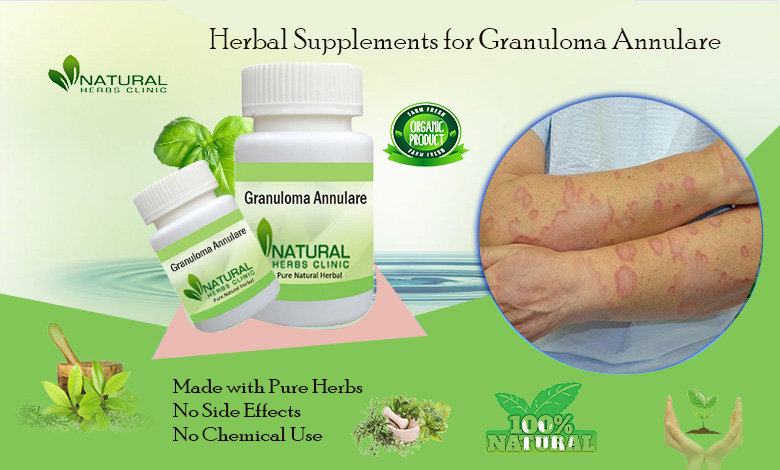Effective Granuloma Annulare Remedies You Can Try Right Now!

Granuloma annulare (GA) is a chronic skin condition characterized by raised, reddish or skin-colored bumps arranged in a ring pattern, often on the hands, feet, elbows, or knees. Although the exact cause is unknown, it is thought to be related to the immune system. For many people, granuloma annulare can be asymptomatic and self-limiting, but for others, it can be persistent and require treatment. If you're looking for effective remedies, here are some you can try right now, with insights into the best treatment for granuloma annulare.
Top Remedies for Granuloma Annulare
1. Topical Corticosteroids
One of the most common treatments for granuloma annulare is the application of topical corticosteroids. These medications help reduce inflammation and can be effective in flattening the lesions. Prescription-strength corticosteroids are usually recommended, and applying them under occlusion (covered with a bandage) can enhance their effectiveness. However, long-term use should be monitored by a healthcare professional to avoid potential side effects such as skin thinning.
2. Cryotherapy
Cryotherapy involves freezing the lesions with liquid nitrogen. This treatment can be effective for localized granuloma annulare, causing the bumps to diminish or disappear. Cryotherapy might require multiple sessions and can result in temporary skin discoloration or blistering.
3. Light and Laser Therapy
Phototherapy, including UVB light treatment or PUVA (psoralen plus ultraviolet A), can be helpful for more extensive cases of granuloma annulare. Laser therapy, such as pulsed dye laser, has also shown promise in reducing the appearance of lesions. These treatments work by targeting the inflammatory cells within the granuloma annulare.
4. Oral Medications
In cases where granuloma annulare is widespread or resistant to topical treatments, oral medications might be prescribed. Drugs such as hydroxychloroquine (commonly used for malaria) or dapsone (an antibiotic with anti-inflammatory properties) have been used to treat this condition. However, these medications come with potential side effects, so they should be used under medical supervision.
Natural and Alternative Remedies
While conventional treatments are often effective, some people prefer natural or alternative remedies. Here are a few that may help:
5. Aloe Vera
Aloe vera is known for its soothing and anti-inflammatory properties. Applying fresh aloe vera gel to the affected area may help reduce inflammation and soothe the skin. It’s a gentle option that can be used regularly without significant side effects.
6. Apple Cider Vinegar
Apple cider vinegar (ACV) has natural anti-inflammatory and antimicrobial properties. Diluting ACV with water and applying it to the affected areas with a cotton ball may help reduce the appearance of the lesions. It’s important to test a small area first to ensure that the vinegar does not cause irritation.
7. Turmeric
Turmeric is renowned for its anti-inflammatory and antioxidant properties, largely due to its active compound, curcumin. You can make a paste by mixing turmeric powder with water or coconut oil and apply it to the granuloma annulare lesions. Additionally, consuming turmeric supplements or adding it to your diet may help support your immune system.
8. Tea Tree Oil
Tea tree oil has natural antiseptic and anti-inflammatory properties. Applying diluted tea tree oil (mixed with a carrier oil like coconut or jojoba oil) to the affected areas may help reduce inflammation and prevent infection. As with any essential oil, it's important to do a patch test first to check for skin sensitivity.
Best Treatment for Granuloma Annulare
The best treatment for granuloma annulare depends on several factors, including the extent of the lesions, their location, and the individual's overall health. For localized granuloma annulare, topical corticosteroids or cryotherapy may be the most effective initial treatments. For more extensive or persistent cases, phototherapy or oral medications may be necessary.
Supplements for Granuloma Annulare, while not always supported by robust clinical evidence, can be a supplementary approach to managing symptoms and promoting skin health. However, it’s crucial to consult with a healthcare provider before starting any new treatment, especially if considering alternative remedies alongside conventional medicine.
Lifestyle and Dietary Considerations
While there's no definitive diet for granuloma annulare, maintaining a healthy lifestyle and a balanced diet rich in anti-inflammatory foods can support overall skin health. Foods high in omega-3 fatty acids, antioxidants, and vitamins can be beneficial for skin conditions. Staying hydrated and avoiding known skin irritants can also help manage symptoms.
Conclusion
Granuloma annulare can be a persistent and sometimes frustrating skin condition, but there are several effective remedies and treatments available. Whether opting for medical treatments like corticosteroids and phototherapy or exploring natural remedies such as aloe vera and turmeric, it’s essential to find what works best for you. Always consult a healthcare professional to determine the most appropriate treatment plan for your individual needs. With the right approach, it's possible to manage granuloma annulare effectively and improve the appearance of the skin.